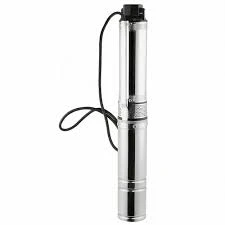Nov . 21, 2024 10:30 Back to list
submersible vs jet pump
Submersible Pumps vs. Jet Pumps A Comparative Analysis
When it comes to pumping water from wells or handling liquid transfers in various applications, choosing the right type of pump is crucial for efficiency and effectiveness. Two of the most common types of pumps used in these scenarios are submersible pumps and jet pumps. Each comes with its unique advantages and disadvantages, and understanding the differences can help you make an informed decision based on your specific needs.
Submersible Pumps
Submersible pumps are designed to operate while submerged in the water they are pumping. They consist of a motor and a pump housed together, which means the entire unit is placed underwater. This design allows for efficient operation, as the pump can generate high pressure and deliver water from deep wells.
One of the significant advantages of submersible pumps is their ability to handle high volumes of water with minimal energy consumption. They are particularly effective in deep well applications where traditional pumps might struggle. Additionally, the submerged nature of the pump reduces the risk of cavitation, a phenomenon that occurs when vapor bubbles form and collapse in a liquid, potentially damaging the pump.
Maintenance for submersible pumps can be more challenging compared to jet pumps, mainly because they are installed below the water level. If repairs are necessary, retrieving the unit requires pulling it out of the water, which can be labor-intensive and time-consuming. However, when installed correctly, submersible pumps are typically robust and have a long lifespan.
Jet Pumps
Jet pumps, on the other hand, operate using a different principle. Instead of being immersed in water, they are installed above ground, relying on a combination of suction and pressure to draw water from wells. Jet pumps use a jet of high-velocity water to create a vacuum, which pulls water into the pump and pushes it to the surface.
submersible vs jet pump

One of the primary benefits of jet pumps is their ease of installation and maintenance. Since they are located above ground, accessing them for repairs is generally more manageable than with submersible pumps. Jet pumps are also more versatile for shallow well applications, making them a popular choice for residential use, especially in areas where water levels are not very deep.
However, jet pumps do have limitations. They are not as efficient as submersible pumps in deep applications, and their performance can diminish significantly as the well depth increases. They are also more prone to cavitation, which can lead to pump damage if not monitored carefully.
Comparison and Applications
When choosing between a submersible pump and a jet pump, several factors come into play, including well depth, water volume requirements, and maintenance considerations.
For deep wells, submersible pumps are often the preferred option due to their efficiency and ability to handle high water volumes without excessive energy use. They are particularly suitable for agricultural applications, municipal water suppliers, and industrial uses where large amounts of water need to be extracted from significant depths.
Conversely, for shallow wells or applications that require less water volume, jet pumps may be more appropriate. They are widely used in residential settings for home irrigation systems or where the groundwater level is accessible.
Conclusion
In conclusion, both submersible and jet pumps have their unique advantages and applications, making them suitable for different scenarios in water management. Understanding the specific needs of your application—such as the depth of the water source, required flow rates, and ease of maintenance—can help you choose the most appropriate pump type. Whether you opt for a submersible pump or a jet pump, ensuring proper installation and maintenance will be vital for long-term reliability and performance. Ultimately, the right choice will enhance efficiency and meet your water pumping needs effectively.
-
Submersible Water Pump: The Efficient 'Power Pioneer' of the Underwater World
NewsJul.01,2025
-
Submersible Pond Pump: The Hidden Guardian of Water Landscape Ecology
NewsJul.01,2025
-
Stainless Well Pump: A Reliable and Durable Pumping Main Force
NewsJul.01,2025
-
Stainless Steel Submersible Pump: An Efficient and Versatile Tool for Underwater Operations
NewsJul.01,2025
-
Deep Well Submersible Pump: An Efficient 'Sucker' of Groundwater Sources
NewsJul.01,2025
-
Deep Water Well Pump: An Efficient 'Sucker' of Groundwater Sources
NewsJul.01,2025
-
 Submersible Water Pump: The Efficient 'Power Pioneer' of the Underwater WorldIn the field of hydraulic equipment, the Submersible Water Pump has become the core equipment for underwater operations and water resource transportation due to its unique design and excellent performance.Detail
Submersible Water Pump: The Efficient 'Power Pioneer' of the Underwater WorldIn the field of hydraulic equipment, the Submersible Water Pump has become the core equipment for underwater operations and water resource transportation due to its unique design and excellent performance.Detail -
 Submersible Pond Pump: The Hidden Guardian of Water Landscape EcologyIn courtyard landscapes, ecological ponds, and even small-scale water conservancy projects, there is a silent yet indispensable equipment - the Submersible Pond Pump.Detail
Submersible Pond Pump: The Hidden Guardian of Water Landscape EcologyIn courtyard landscapes, ecological ponds, and even small-scale water conservancy projects, there is a silent yet indispensable equipment - the Submersible Pond Pump.Detail -
 Stainless Well Pump: A Reliable and Durable Pumping Main ForceIn the field of water resource transportation, Stainless Well Pump has become the core equipment for various pumping scenarios with its excellent performance and reliable quality.Detail
Stainless Well Pump: A Reliable and Durable Pumping Main ForceIn the field of water resource transportation, Stainless Well Pump has become the core equipment for various pumping scenarios with its excellent performance and reliable quality.Detail
